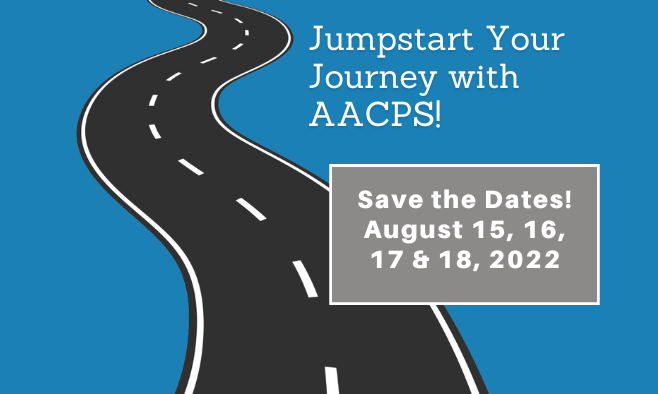
GPA's are not magical mathematical equations. GPA's are simply simplified representations that reflect your academic achievements. If you've been putting forth effort and seriousness in your studies, your GPA will show it. Remember that a GPA isn’t the only indicator of success. It is only the result of hard work. Here are some tips to boost your GPA.
Weighted grade point average
The calculation of a student's weighted grade point average will take into consideration the number of courses taken in college. It is calculated by taking the marks of all courses, including those which have been repeated, and then dividing them by how many credits. Advanced courses will have point values of A=2.5, honors courses will use A=1.5, and standard classes will use A=2.50, B=1.5, and D=.5. The average will determine the student's rank in their class.
Students may find it disincentive to use grades that are weighted. Weighted grades encourage students to take harder courses and eliminate any disincentive of receiving a lower grade. In addition, weighted marks are more balanced and can be used to recognize academic achievement. This information should not be taken lightly and should be explored by reporters and college counselors.

Unweighted grade point average
The most common measure used by college students is the Unweighted Grade Point Average (GPA). If you are taking competitive classes, there isn't much advice. There are many methods to improve your academic performance while maintaining a high average. Here are some of the most common methods. These strategies will help you increase your GPA.
The grades earned in each course determine the Unweighted grade average. This means that you will use the highest grade if you take the course more than once. Each grade has its own point value. A is worth 2.5 for advanced courses and B is worth half. And D is. You can also use the Unweighted grade point average to determine your class rank.
Calculating a grade average
A grade-point average (GPA), or grade point score, is a measurement that measures an individual's academic achievement. It is the sum total of all grades earned in different courses throughout a semester. The country and school from which students are studying can affect the grades they receive. This grade calculator can accept letter grades and convert them in numerical value. Grades will range from 0.0 to 4.0. A high GPA is considered to be a desirable indicator of academic achievement.
Student can choose to withdraw from a course if they're not happy with their grade. A course graded W is recorded on the student's record but is not part of the grade point average calculation. The grade of a student who has dropped a course due to non-participation should be corrected as soon as possible. During this time, an "IP" symbol will appear on the student's permanent record. The class will be completed with a substantive grade or unit of credit. A student cannot graduate with an IP grade.

Calculating a cumulative grade-point average
Students should learn how to calculate their cumulative grade points average (GPA). This measure measures how academically proficient you have been throughout college. You need to know how many credits have you taken in order to calculate your GPA. To calculate your GPA for all four semesters, multiply your semester GPA by the number of credits, usually twelve. Divide the total by the number if semesters.
Many institutions will have a list of equivalent numeric numbers for letter grades. To determine the basis of your GPA, you should refer to this list. Once you have these details, you can use our calculator to calculate the GPA. Keep in mind that the calculator will give an estimate. It is not a legal tool. For more information on how to calculate your GPA using numeric equivalents, consult the institution documents.
FAQ
Do you think it is difficult to be a teacher
You must be a teacher. It will require you to dedicate a lot of time to your studies.
You can expect to work 40 hours per semaine while earning your degree.
You will also need to find a job that suits your schedule. Part-time jobs are difficult to find for students who want to balance school and work.
After you have been offered a permanent position, you will be expected to teach classes throughout the day. You may even need to travel to different schools throughout the week.
How long should you spend on college preparation?
The time it takes to prepare to go to college will depend on how much time you are willing to dedicate to your studies. Take college preparation classes if you are planning to attend college immediately after graduating high school. However, if your plan is to delay attending college for several years, you may not need to start planning.
Talk to your teachers and parents about your plans. They might recommend certain courses. It's important to keep track and record the grades received in each course. You'll be able to see exactly what you need next year.
How do I select my major?
Students choose their majors according to their interests. Some students prefer to choose a subject they like because it's easier than other subjects. Others want to pursue a career for which there are no jobs available. Others choose a major to make money while they study. Whatever your reason, you should think about what type of job you would like to have after graduation.
There are many avenues to find information about various fields of study. Talk to your friends and family about their experiences in these fields. Read magazines and newspapers to see if there are any careers listed. Talk to your guidance counselor at school to learn more about possible careers. Visit Career Services at the local library or community centre. Check out books on various topics from your public library. To search for websites that relate to specific careers, use the Internet.
Should I be a specialist or branch out in one area?
Many students choose to specialize in one subject (e.g., English, History, Math) instead of branching into multiple subjects. It is not always necessary to become a specialist. For example, if you're considering becoming a physician, you could choose to specialize in either internal medicine or surgery. You could also choose to specialize in family practice, pediatrics, gerontology or neurology. If you are considering a career in the business world, you might focus on marketing, sales, finance, operations research, marketing management, and human resources. It's your choice.
What is the difference in public and private schools?
All students have access to public schools at no cost. They provide education for students from kindergarten through highschool. Private schools charge tuition fees. They offer education from preschool through college.
Charter schools, which are private but publicly funded, are also available. Charter schools do not follow the traditional curriculum. Instead, they give their students more freedom to learn what interests them.
Charter schools are very popular with parents who believe that all children should have equal access to education, regardless of their financial circumstances.
Statistics
- Think of the rhetorical power of nineteenth-century abolitionist Harriet Beecher Stowe, Martin Luther King, Jr., or Occupy Wall Street activists with their rallying cry of “we are the 99 percent.” (bostonreview.net)
- Globally, in 2008, around 89% of children aged six to twelve were enrolled in primary education, and this proportion was rising. (en.wikipedia.org)
- In most developed countries, a high proportion of the population (up to 50%) now enters higher education at some time in their lives. (en.wikipedia.org)
- These institutions can vary according to different contexts.[83] (en.wikipedia.org)
- Data from the Department of Education reveal that, among 2008 college graduates, 92.8 percent of humanities majors have voted at least once since finishing school. (bostonreview.net)
External Links
How To
What is vocational education?
Vocational education prepares students for the workforce after high school. Students are trained in specific skills to be able to do a particular job such as welding. It also includes on-the-job training in apprenticeship programs. Vocational education stands out from general education. This is because it focuses less on general knowledge and more on developing skills for specific occupations. The goal of vocational education is not necessary to prepare people for university study but to help them find jobs upon graduation.
Vocational education can be offered at any level of schooling: primary, secondary, college, university, technical institutes and trade schools. There are also many specialty schools like nursing schools and law schools, legal schools, medical schools and dental schools as well as veterinary medicine, veterinary medicine, firefighting, police academies and military academies. These schools offer both practical and academic training.
A number of countries have made significant investments in vocational education over recent decades; for example, Australia, Denmark, Finland, Germany, Ireland, Japan, Luxembourg, New Zealand, Norway, Poland, Sweden, Switzerland, the United Kingdom, and the United States. The effectiveness of vocational training is still a controversial topic. Some critics say it does not improve students' employability. Other argue that it prepares them well for life beyond school.
The U.S. Bureau of Labor Statistics has estimated that 47% of American adults hold a postsecondary certificate or degree related to their current occupation. This is a higher percentage among those who have more education. 71% are currently employed in fields that require postsecondary qualifications.
In 2012, the BLS reported that nearly half of the nation's adult population had at least some form of postsecondary credential. One-third of Americans had a two year associate degree. Only 10% held a four-year bachelors degree. One in five Americans holds a master’s degree or doctorate.
For those with a bachelor’s degree, the median annual income was $50,000. This is compared to $23,800 if you don't have one. For advanced degrees, the median annual wage was $81,300.
The median wage for those who didn't complete high school was $15,200. Earn $13,000 per annum for those with less high school diplomas.